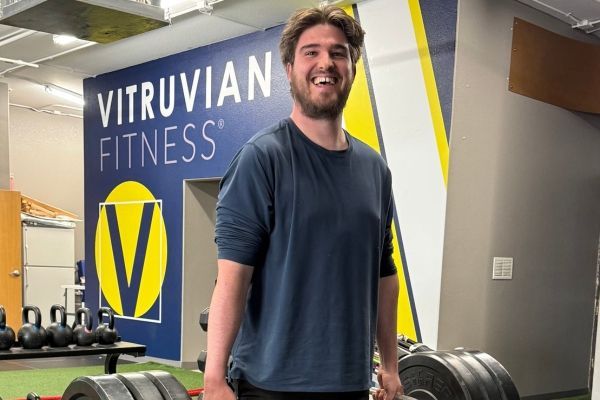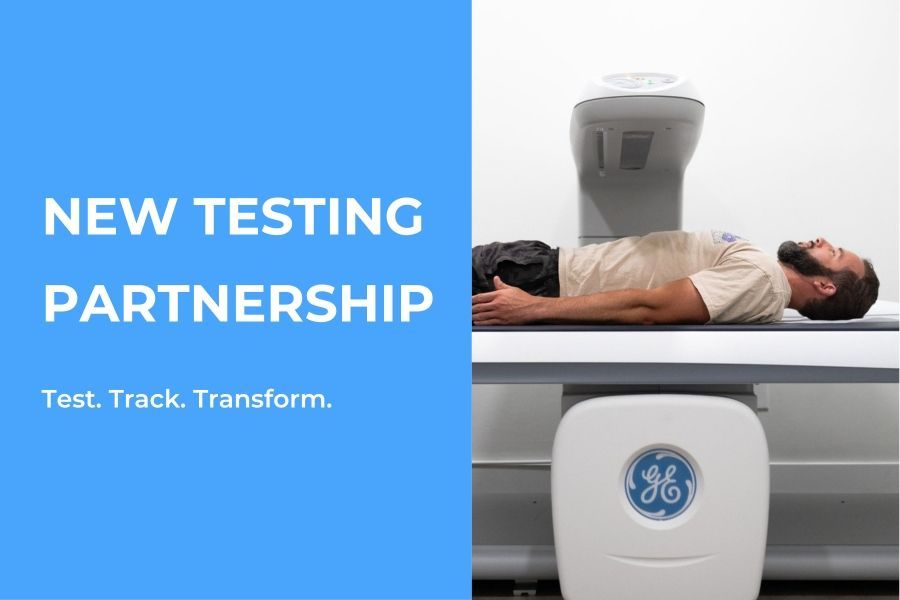PTs, ATCs, and Chiros - Oh My
Who Does What? Understanding what Athletic Trainers, Physical Therapists, and Chiropractors have in common and what makes them different.
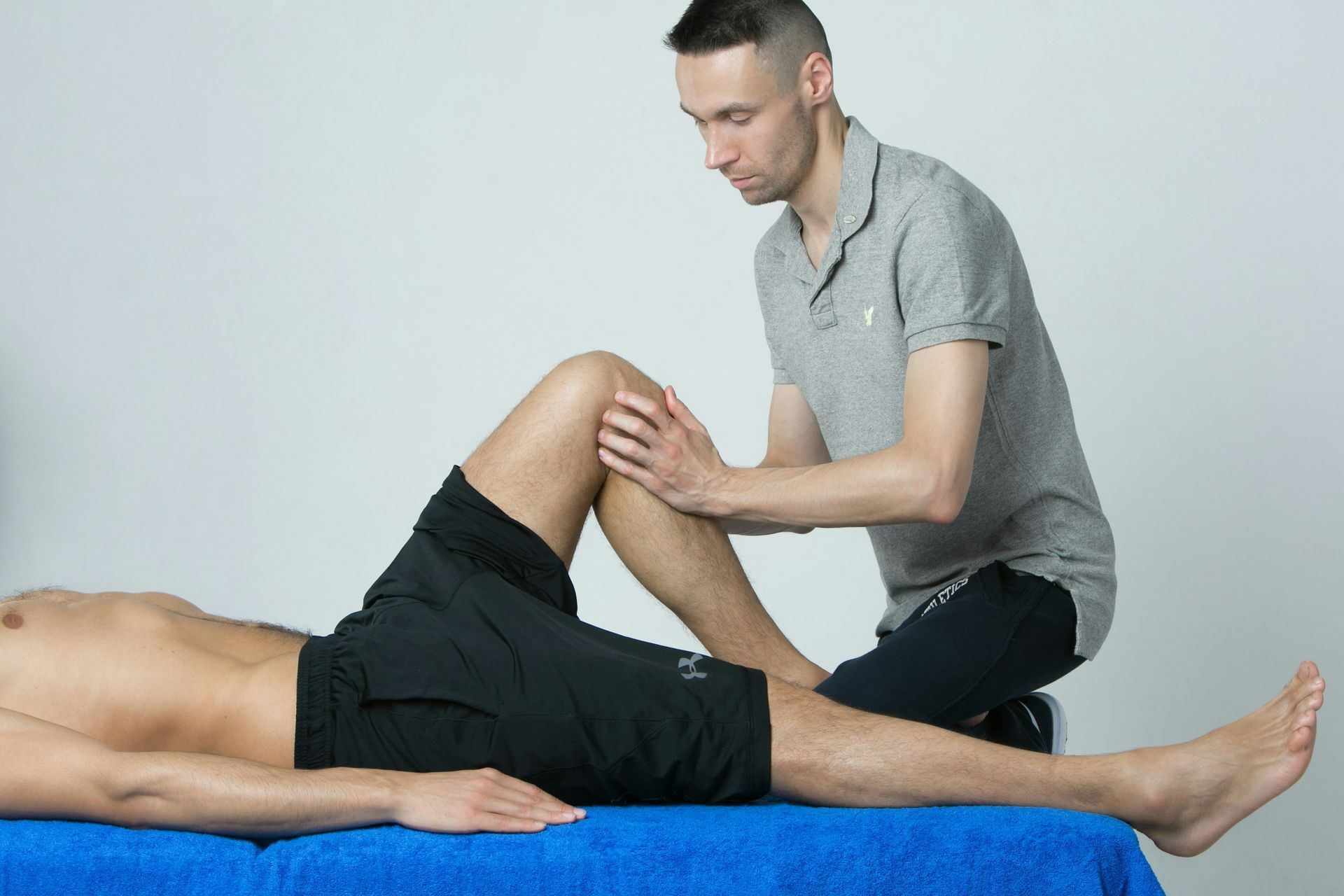
When we work out and play hard, a little soreness and/or stiffness is not uncommon. In fact, depending on the circumstances, it might be expected. And that's OK.
However, when you have something more serious like an actual injury, nagging or lingering pain, or want help optimizing your movement and recovery, you may wonder who is the best practitioner to help solve your problem: a Physical Therapist, a Chiropractor, an Athletic Trainer, or a Personal Trainer?
The answer isn’t always obvious.
Excluding the personal trainer from the mix, the other three professionals all specialize in treating the musculoskeletal system (and aspects of the nervous system) by improving how you move, feel, and perform. But they don’t all do it the same way and each brings something unique to the table.
Here we’ll summarize what each practitioner does, how they differ, and where they overlap so you can make an informed decision based on your specific situation, needs, and goals.
Athletic Trainers
First off, let’s address one of the most common sources of confusion. Athletic trainers don’t train athletes. Athletic trainers in Colorado are licensed healthcare professionals who treat people (not just athletes) with injuries and other musculoskeletal issues. The only things they have in common with Personal Trainers is they both have the word Trainer in their job description and they both do movement-oriented work. It’s an unfortunate job title that creates confusion. Now that we've clarified that, let’s move on.
Licensed Athletic Trainers (ATCs) are healthcare professionals who specialize in preventing, diagnosing, and managing injuries, particularly in active populations. If you've ever watched a college or pro sporting event, you've probably seen athletic trainers rush onto the field when an athlete goes down.
But athletic trainers don’t just serve competitive athletes. More and more schools, clinics, gyms, and even industrial workplaces are hiring ATCs to oversee injury prevention and manage return-to-activity protocols.
Their skillsets may include:
- Acute injury assessment and emergency care
- Sports taping, bracing, and splinting
- Manual therapy, dry needling, cupping, and other therapeutic modalities
- Strength and conditioning guidance
- Concussion evaluation and return-to-play clearance
- Long-term rehab and performance integration
Athletic Trainers may work independently or may be the bridge in treatment strategies between physicians, physical therapists, and strength coaches. They’re highly trained in biomechanics, functional movement, and safe progression back to activity.
Best if you need: sports injury care, on-site prevention, return-to-play planning, or sideline decision-making.
Our favorite Athletic Trainer is Lori Seiler of Seiler Therapeutics and she is treating clients right here at Vitruvian Fitness!
Click here to learn about Lori Seiler of Seiler Therapeutics.
Physical Therapists
Physical Therapists (PTs) are licensed healthcare providers who diagnose and treat conditions that affect movement and function. Their work spans a wide range of populations, from post-surgical patients and stroke survivors to injured athletes and desk jockeys with chronic back pain.
PTs take a holistic view of the body’s mechanics. They assess joint range of motion, strength imbalances, gait patterns, and posture, then design a custom rehabilitation plan.
Treatment often includes:
- Corrective and therapeutic exercise
- Manual therapy (mobilizations and soft tissue work)
- Pain management using modalities like ultrasound, TENS, dry needling, cupping, Graston. . . .
- Balance, coordination, and fall prevention programs
PTs are uniquely qualified to work with post-operative patients, individuals recovering from neurological events (like a stroke), and those with chronic or complex conditions. Most recent graduates of a PT program hold a Doctor of Physical Therapy (DPT) degree although many PTs who have been practicing since 2016 completed their education with a Masters of Science. In both cases, their work is rooted in clinical research and evidence-based practice.
Best if you need: complex rehab, injury recovery, movement retraining, post-op care, or help with chronic pain from an orthopedic or neurological condition.
We've been referring clients to Erica Hellmuth at Altitude Physical Therapy for over 14 years.
Chiropractors
Doctors of Chiropractic (DCs) are licensed healthcare professionals who focus on diagnosing and treating neuromuscular disorders, primarily through manual adjustments and manipulation of the spine and other joints. These manipulations are designed to restore alignment, relieve pressure on nerves, and improve range of motion. DCs emphasize a drug-free, hands-on approach to health care that includes patient examination, diagnosis, and treatment, often with an emphasis on improving function and alleviating pain.
Modern chiropractors often offer much more than just adjustments. Many incorporate soft tissue therapies, movement screening, and ergonomic counseling.
Chiropractic care typically focuses on:
- Back and neck pain
- Headaches and migraines
- Postural imbalances
- Disc injuries and nerve impingement
- Chronic musculoskeletal complaints
Some chiropractors promote wellness care with regular visits to maintain spinal health, others specialize in acute pain, auto injuries, or sports rehab.
Best if you need: relief from spinal pain or joint stiffness, nervous system regulation, or hands-on treatment focused on alignment and mobility.
Our favorite Chiropractor is Dr. Kerry Iselin from Iselin Chiropractic.
Click here to learn more about Dr. Kerry and a summer special for new and existing patients.
Where They Overlap and Why It Matters
Despite their differences, PTs, DCs, and ATCs all share a foundational mission: helping people move better, feel better, and stay injury-free.
They all:
- Evaluate movement and biomechanics
- Treat musculoskeletal pain and dysfunction
- Use hands-on techniques to improve function
- Create individualized plans to restore performance
- Educate patients about injury prevention and self-care
Where they differ is in
focus, scope, and approach.
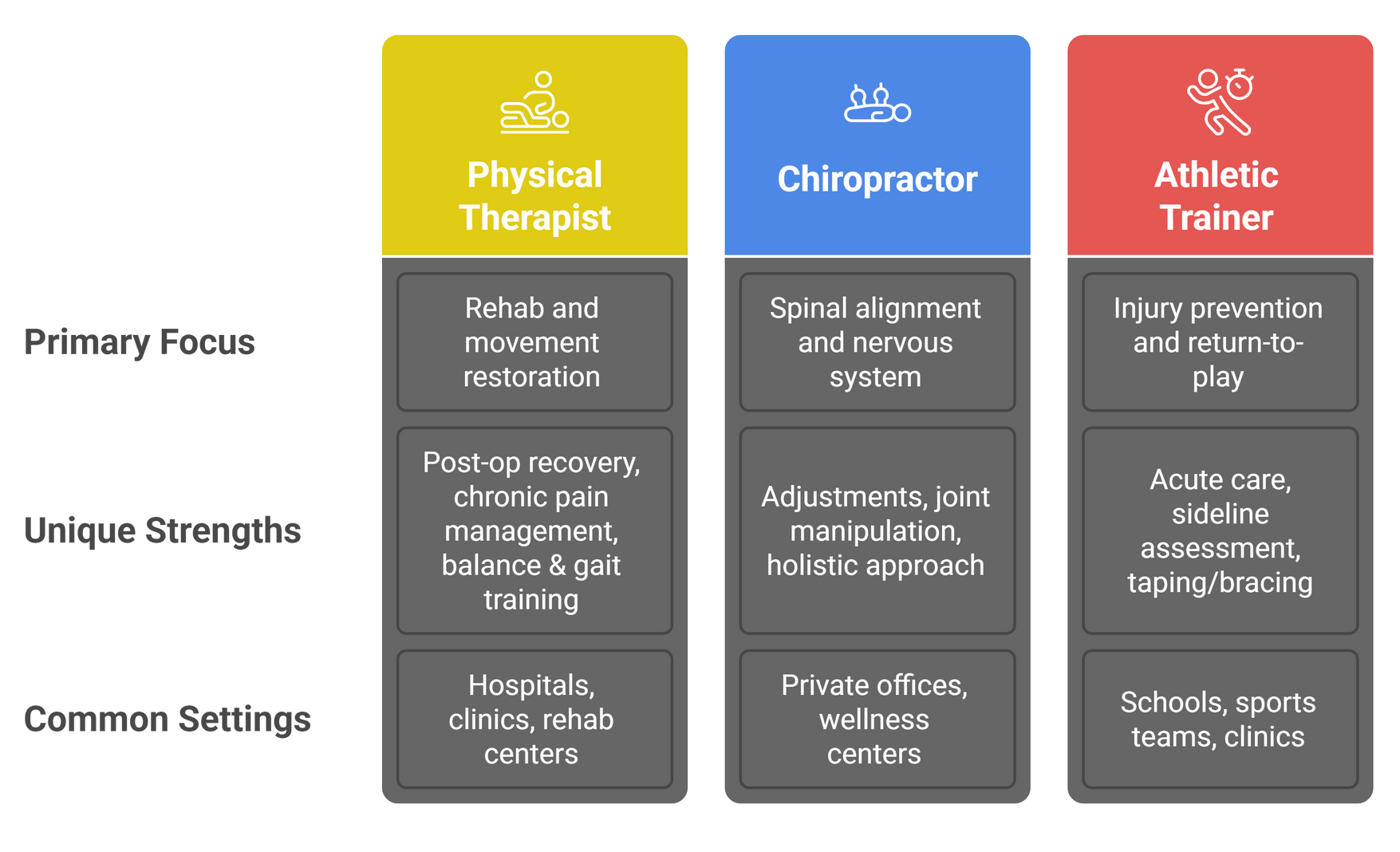
All three can be valuable partners in your health journey. The best choice depends on what you’re dealing with:
- Post-surgical rehab? See a PT.
- Chronic low back pain or a pinched nerve? A Chiropractor might be the right fit.
- Muscle or joint pain during activities or exercise? An Athletic Trainer can evaluate and help you return safely.
In some cases, it’s not about choosing one over the other—it’s about integrating them. Many athletes, weekend warriors, and active adults benefit from a care team that includes two or even all three professions.
Final Takeaway
Understanding the unique roles and shared goals of these professionals can help you get the care you need faster and get back to doing the things you love.
If you’re ever unsure who to turn to, start with someone who asks questions, assesses your movement, and has a clear plan that respects your goals and limitations. Whether that’s a PT, DC, or ATC, the best provider is the one who sees you as a whole person, not just a set of symptoms.
Visual Summary: Overlap of Services
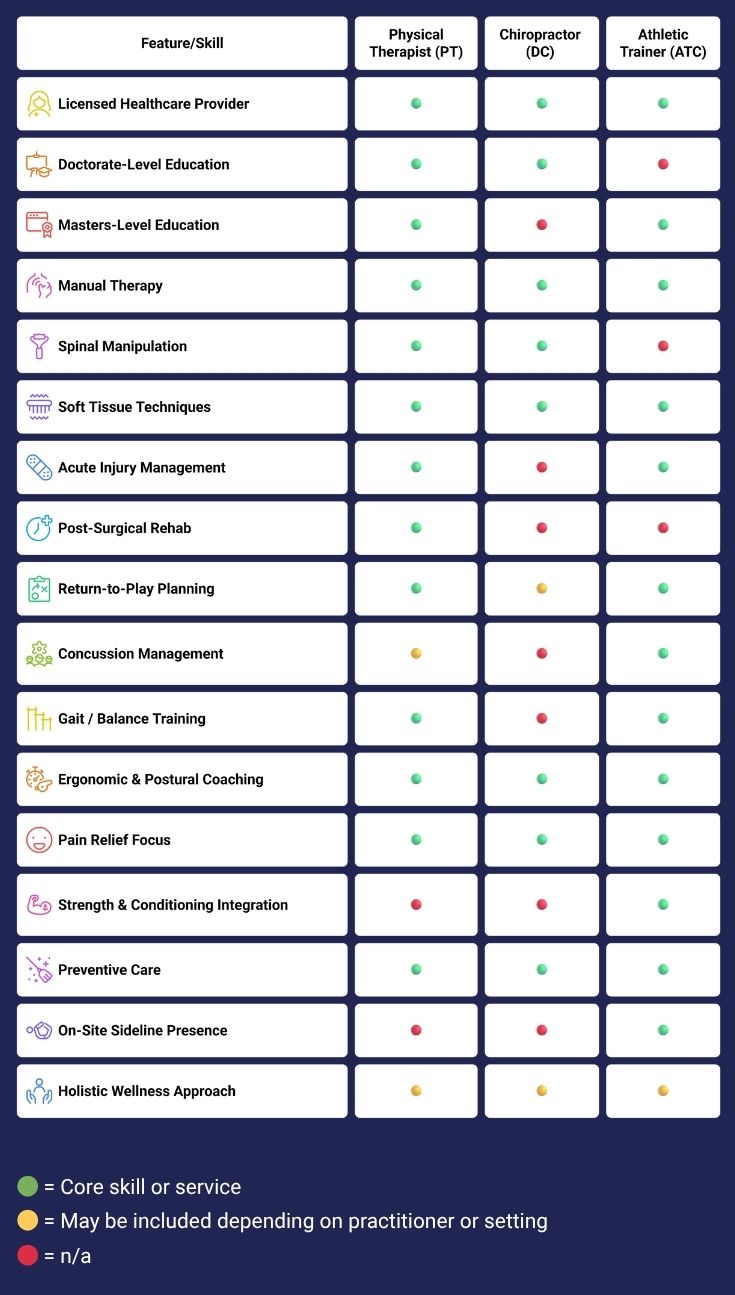
You might also enjoy these posts . . .
